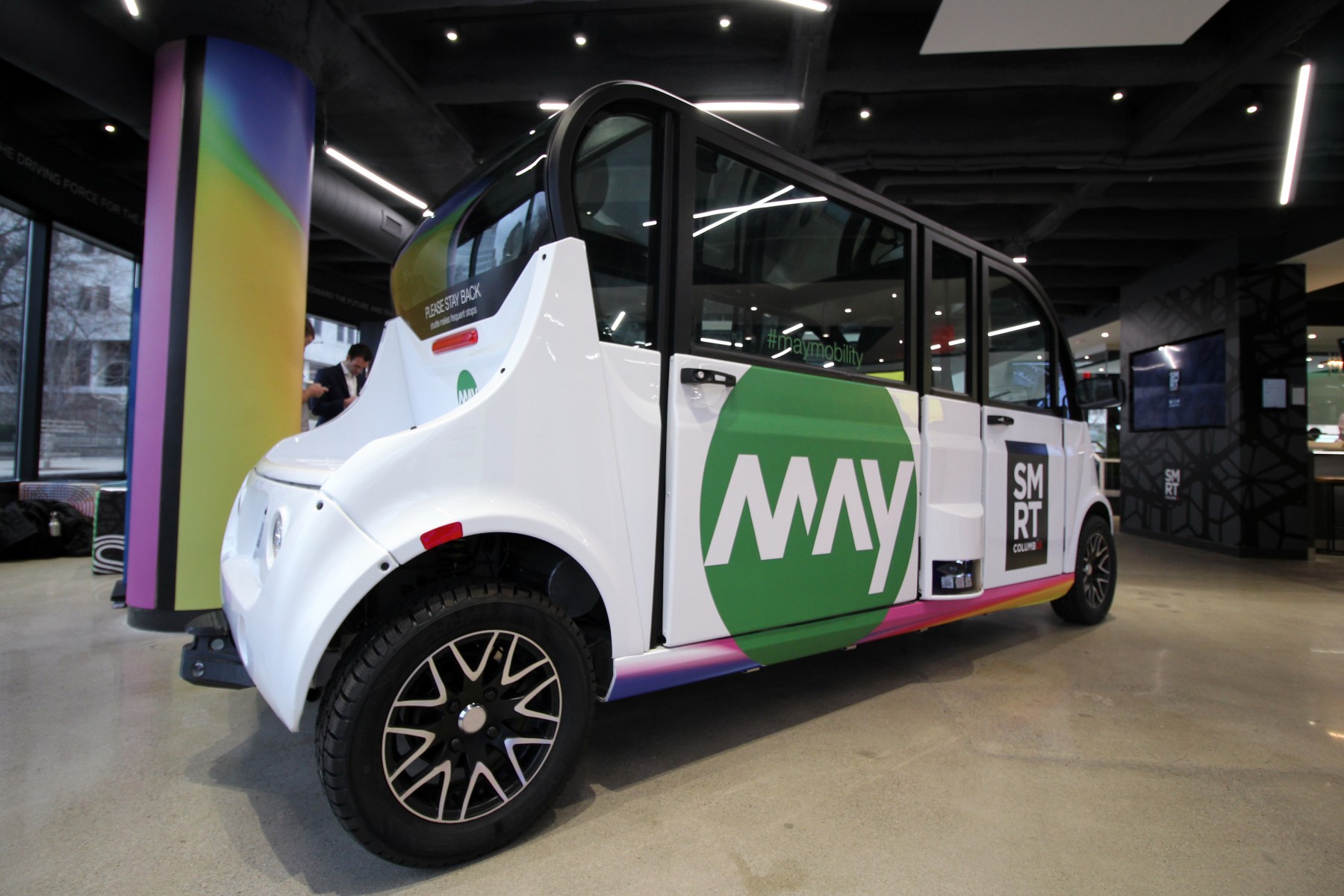Four years later, Ohio State research boosts Smart Columbus
University continues to build on mobility research

Add me on LinkedIn (opens in new window)
|
Chris Booker Ohio State News 614.292.7276 |
It’s been four years since the city of Columbus was declared the winner of the U.S. Department of Transportation Smart Cities Challenge. Now, several of the projects under that grant that have been directly supported by The Ohio State University are reaching their conclusions.
But researchers at Ohio State agree the work for a smarter Columbus is just getting started.
David Cooke, senior associate director of the Center for Automotive Research and one of the university partners with Smart Columbus, said the lessons learned from the program will have a long-term impact.
“What [the smart cities grant] brought to the city of Columbus is to really put us at the forefront of mobility and smart cities research on a national scale,” Cooke said. “[CAR has been] engaged in automotive research for 30 years doing a subset of this work, very specifically on vehicle design and systems development, but mobility is much broader than just the vehicle.”
As the Smart Columbus lead research partner, the university put money and intellectual capital behind the program. Some of the projects included research on autonomous vehicles, data privacy, trip planning and prenatal trip assistance:
- University researchers helped the testing and development of an autonomous shuttle in the Linden area.
- Ohio State researchers partnered with COTA to help people with cognitive disabilities and older adults use the Wayfinder App, a highly detailed, turn-by-turn navigation app specially built for people with cognitive disabilities.
- Investigators at Ohio State’s Wexner Medical Center partnered with Smart Columbus to learn more about how to best provide medical transportation assistance to pregnant moms.
Harvey Miller, director of the Center for Urban and Regional Analysis (CURA), pointed to the Smart Columbus Operating System, an open source data site, as an exciting legacy for the program.
“The type of work we’ve been doing for Smart Columbus has included looking at the impacts of these programs and things such as mobility, accessibility and travel times,” he said. “I’m very interested in the impacts of new transportation technologies and services on really improving the conditions in our cities from a social equity and environmental point of view.”
The site currently stores over 3,000 datasets containing information on such topics as traffic characteristics, crash records, weather readings, parking locations and health behaviors. The data is open to city planners, researchers and citizens to analyze and explore.
“It’s a common data platform for data across a wide range of different mobility modes and also a wide range of human environmental, physical, social and economic themes,” Miller said. “It brings it all together so we can understand, holistically, the impacts of these mobility technologies on our community.”
Cooke said it’s important to view the Smart Columbus project as a starting point. Some technology, including autonomous vehicles, will take years or decades to develop.
“What you’ve seen is pilots … that have given us really good information as a campus, as a city and as a region into what’s worth investing time and resources in now and what’s much further out.”
Ohio State will continue to play a role in the research for projects that are “much further out.” The university hired Chris Atkinson to lead the Smart Mobility Program and enhance Ohio State’s existing research centers and institutes in the mobility sciences.
Atkinson said the Smart Columbus program was one of the things that attracted him about Ohio State. He said the close relationship formed over the last four years will continue to benefit the community.
“It is only going to be through the combination of research, learning, education, close interaction with the city and close interaction with the surrounding areas that you can start to find solutions to these seemingly intractable problems of congestion, sprawl, economic costs, environmental impact and so on,” he said.
Miller said one of the enduring impacts of the Smart Columbus program will be the focus on issues of social equity.
“The fact that [Smart Columbus is] trying to use mobility to solve social equity problems and disparity problems, to me, it is an unrecognized legacy of this,” he said. “I hope it’s the beginning of a movement where we start thinking more carefully about mobility and social equity and not just about the physical aspects of mobility.”


